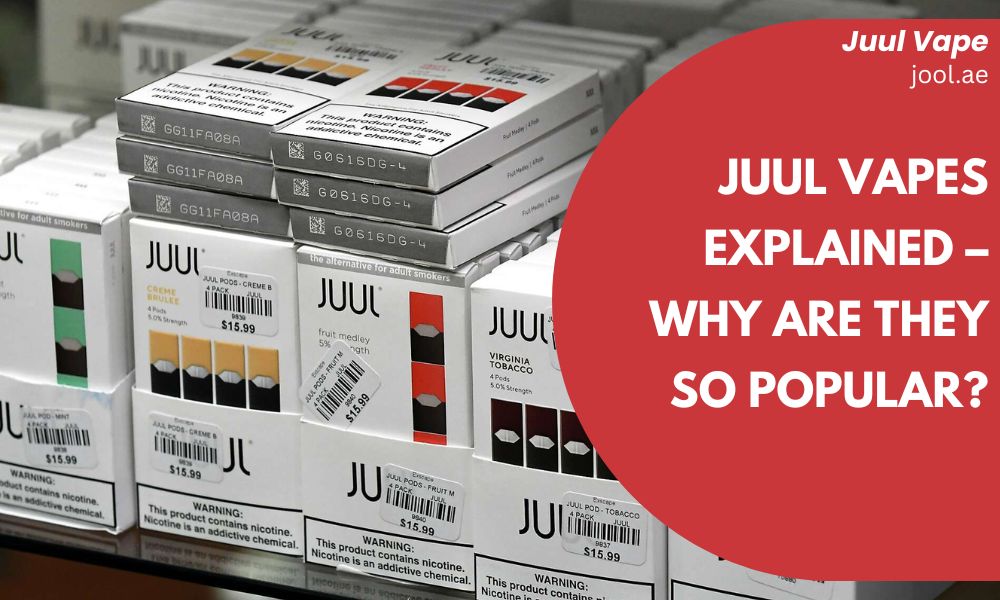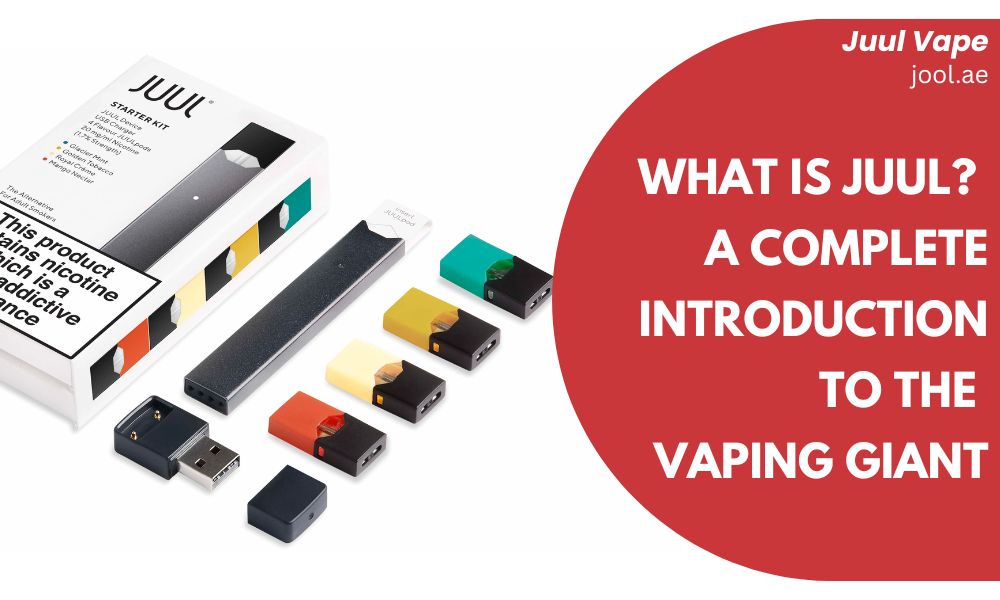Instant Delivery | Free Shipping on 200AED+
Instant Delivery | Free Shipping on 200AED+
Author : Abdel
Date : Thursday, 3rd April 2025
Juul Labs altered the vaping industry after its 2015 launch with its USB-shaped e-cigarettes, capturing 72% of the market by 2017. You’ll recognize the sleek device that delivers nicotine through disposable pods in 3% and 5% concentrations, providing about 200 puffs per pod. While Juul’s valuation peaked at $38 billion following Altria’s investment, regulatory challenges and youth usage concerns have since reduced its market share to 28%. The company’s dramatic rise and fall reflects broader shifts in America’s vaping environment.
Two entrepreneurs, Adam Bowen and James Monsees, launched Juul Labs in 2015 as an ambitious spin-off from Pax Labs, aiming to revolutionize smoking alternatives.
Their flagship e-cigarette, featuring nicotine salts from tobacco cartridges, quickly dominated the vaping industry, capturing an impressive 72% market share by 2017.
Juul’s rapid success attracted major tobacco player Altria, which invested $12.8 billion for a 35% stake in 2018, valuing the company at $38 billion.
However, Juul Labs’ path shifted dramatically as health concerns and criticism over youth-targeted marketing led to increased scrutiny. The company’s market dominance declined considerably, dropping to 28% by 2022.
In response to mounting challenges, Juul Labs introduced the Juul2 in 2023, discontinuing their original device.
Innovation meets simplicity in Juul’s distinctive product design, which features a minimalist USB drive-like form factor that’s revolutionized the vaping industry.
This sleek design combines portability with sophisticated technology, making it a standout vaping device in today’s market.
The closed system operates through disposable Juul pods containing nicotine salts, propylene glycol, glycerol, benzoic acid, and flavorings.
These pods are available in two nicotine concentrations: 5% and 3%, with a single 5% pod providing approximately 200 puffs, equivalent to a pack of cigarettes.
The device’s built-in temperature regulation prevents overheating, ensuring a consistent vaping experience without dry hits.
At the heart of Juul’s success lies its revolutionary nicotine salt formulation, which fundamentally changed how e-cigarettes convey nicotine to users.
Juul’s high nicotine concentrations, reaching up to 5% by weight, match the nicotine absorption rates of traditional cigarettes.
The closed system ensures consistent nicotine transmission through non-refillable pods, each providing about 200 puffs.
Temperature regulation and benzoic acid enhance the experience by lowering pH and preventing harsh hits, creating a smoother inhalation.
Juul Labs dominated the e-cigarette market by capturing a 72% share by 2017. The company’s financial growth was extraordinary, with sales soaring 700% in 2016.
At its peak, Juul’s valuation reached $38 billion after Altria’s $12.8 billion investment.
However, public health concerns and regulatory scrutiny caused a decline. By 2022, market share dropped to 28%, and valuation plummeted to $450 million.
Juul’s marketing strategy utilized social media and youthful imagery to attract millennials and Gen Z.
This approach raised public health concerns about teen nicotine addiction as vaping rates surged among youth.
Following FDA investigations, Juul removed flavored pods in 2018 and refocused on adult smokers.
Scientific studies highlight health risks associated with Juul’s products, including high nicotine concentration and cytotoxicity from chemicals.
Teens using Juul show elevated toxic substances in their bodies, and nicotine may affect brain development and cognition.
While immediate effects are evident, long-term impacts remain under investigation.
Juul’s popularity among teens has created a public health crisis, with 9.5% of 15–17-year-olds and 11% of 18–21-year-olds using the product.
One in five students reports seeing Juul used on campus, and misconceptions about safety persist.
Juul’s discreet design contributes to its appeal and widespread use among teens.
The FDA began regulating e-cigarettes in 2016, requiring premarket approval for products like Juul.
In 2019, the FDA investigated Juul’s marketing and found 40 violations related to underage sales.
Juul suspended social media marketing and faced tighter restrictions under ongoing regulatory scrutiny.
Founded by Adam Bowen and James Monsees, Juul secured $650M in 2018 and received a $12.8B investment from Altria that year.
Kevin Burns stepped down as CEO in 2019, replaced by K.C. Crosthwaite, with Jose Luis Murillo becoming Chief Regulatory Officer.
Juul’s valuation dropped from $10B in 2020 to $450M by 2022 due to market shifts and regulations.
Juul expanded globally, entering China via VMR Products LLC in 2018, but faced challenges from international regulations.
While it once held 72% of the market, Juul’s share fell to 28% by 2022.
Competitors like Blu, NJOY, and Vuse gained ground as Juul’s valuation declined.
Juul launched the Juul2 in 2023 in an effort to regain momentum.
The documentary explores how Juul’s design and marketing led to youth addiction and legal issues, revealing health and regulatory concerns.
Vapes vary in design and settings, while JUUL is a specific brand with pre-filled pods, high nicotine, and auto temperature control.
No, due to a drop in company valuation and public backlash, the founders are no longer billionaires.
JUUL isn’t fully illegal, but it’s heavily regulated due to youth usage, health risks, and marketing controversies. Some states ban flavored products.
Juul evolved from a promising startup to a controversial vaping giant. Despite initial success through innovation, the company now faces heavy regulations, public health criticism, and stiff competition as it adapts in a shifting industry landscape.

JUUL Vapes Explained – Why Are They So Popular?
You’ve likely encountered JUUL vapes or know
Read More ⇢
What Is Juul? A Complete Introduction to the Vaping Giant
Juul Labs altered the vaping industry after i
Read More ⇢